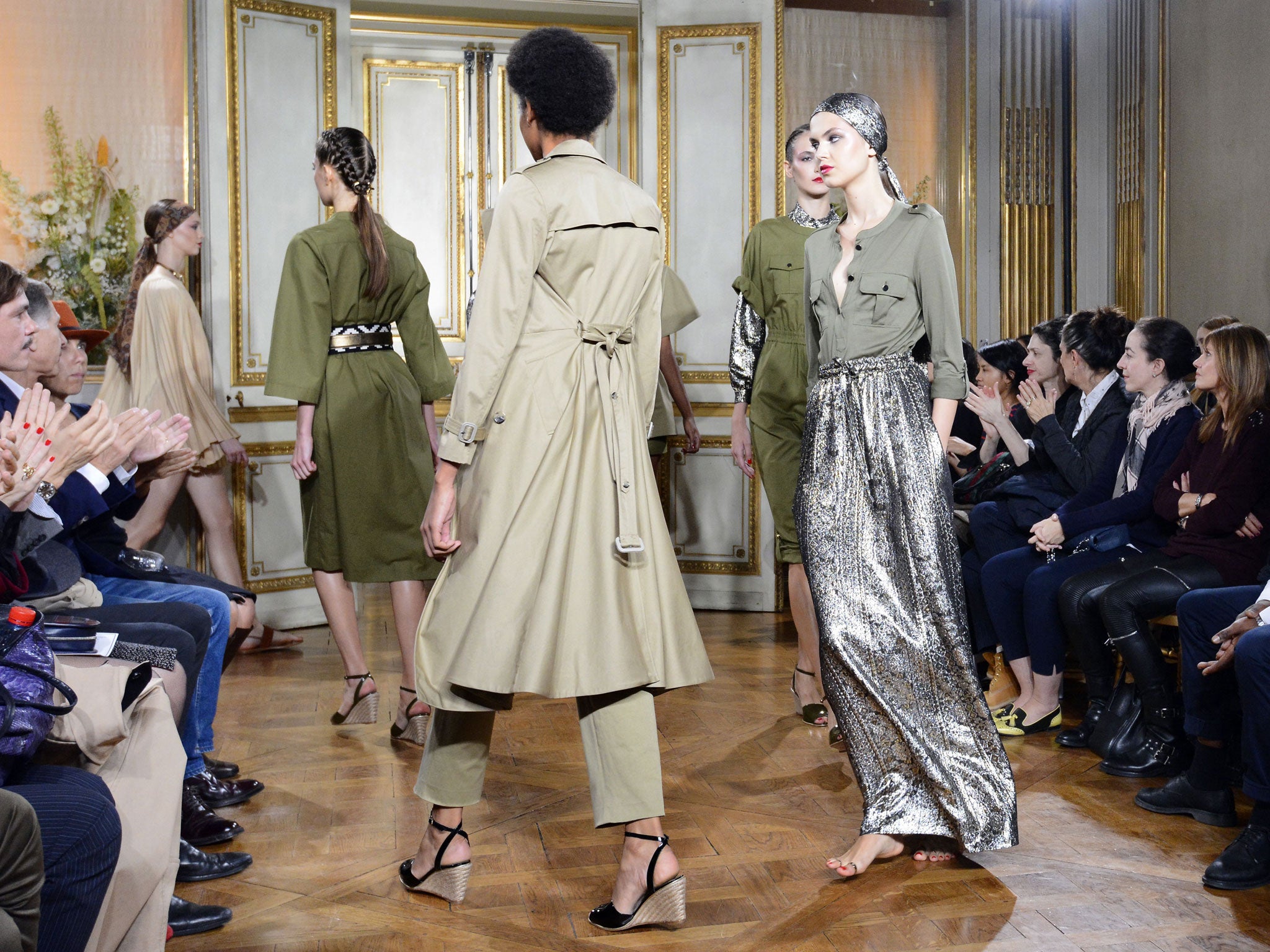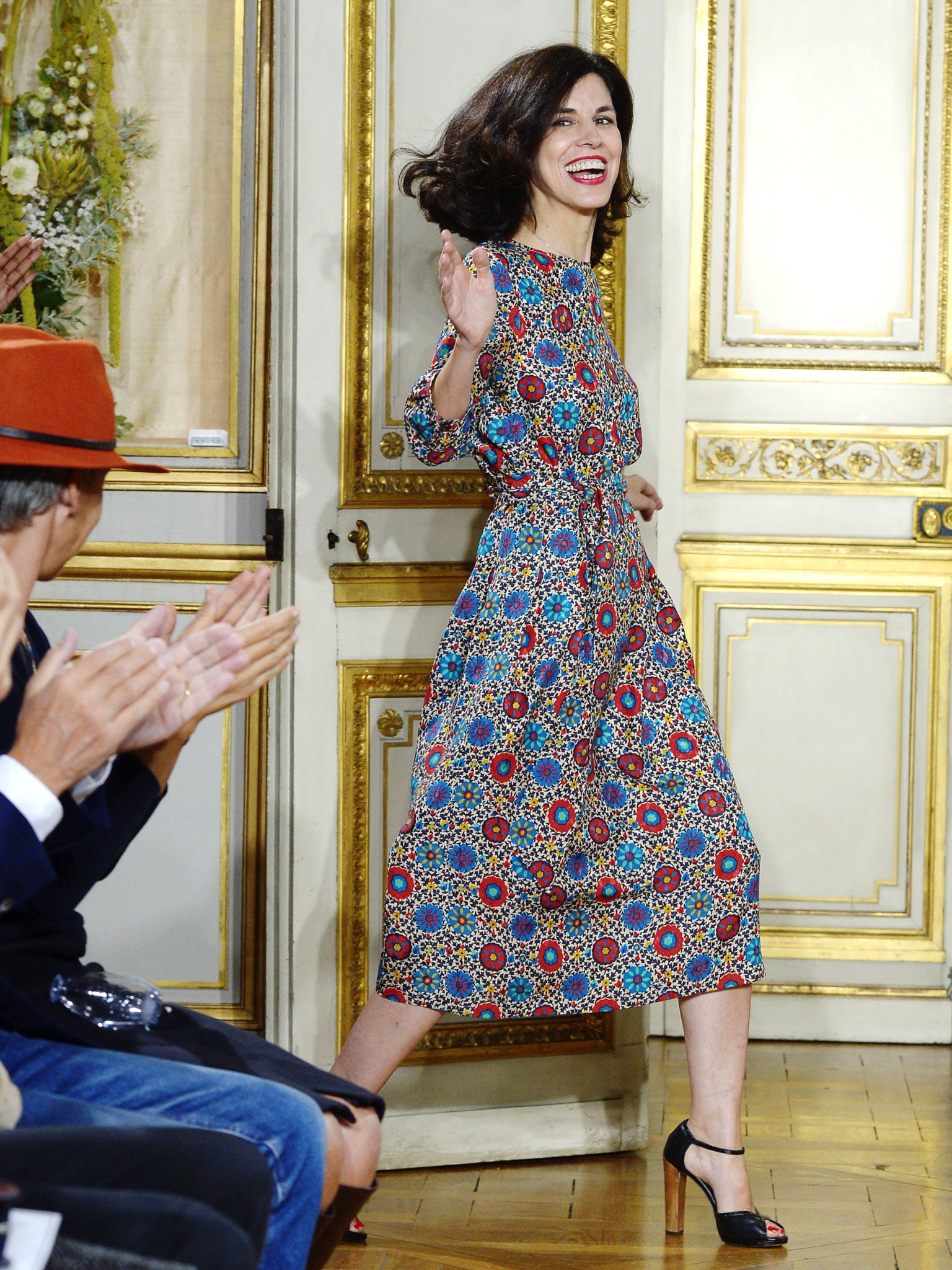Fashion designer Vanessa Seward took inspiration from 1970s glamour and created a whole new look
While her prices are not low, Seward's clothes are within reach of the average working woman who wants to invest in a classic wardrobe

In the century or so since Chanel founded her eponymous label in Paris, the city has remained the centre of the fashion world. Today its Fashion Week boasts a schedule bursting with big-budget brands and heavyweight heritage houses, and so is generally not the ideal home for designers making their debut. But Vanessa Seward is not a typical designer in that respect, and when presenting her first solo collection last March, she could not have chosen any city in which to do so other than the one that has been her home for more than 30 years.
Born in Buenos Aires in 1969 to an Argentinian diplomat and his wife, Seward spent her formative years in St John's Wood, the leafy enclave of north-west London to which she was transplanted aged two. Here she attended St Mary's convent school and, once free from the school gates and the nuns' ever-watchful gaze, she was captivated by the style of the 1970s and that of her glamorous mother in particular.
"She was a very exuberant character," recalls Seward, at home in the 17th arrondissement neighbourhood of Batignolles where she lives with her musician husband and five-year-old daughter. "She used to go out nearly every night: she loved dressing and she used to make herself these hats with veils. She had a vast amount of clothes, vast! And a vast amount of shoes – she was obsessed with fashion."

The Ossie Clark, Gina Fratini and John Marks by Anne Tyrrell that made up her mother's wardrobe made a lasting impression on the designer. As did the spirit of creativity and freedom that gripped London during her youth, and there is a retro characteristic, an almost sepia tint, to her collections today. "I don't do it on purpose," she says. "It's just something that has always stuck – it was a very happy time in my life. I love the Seventies, the idea of it as well as the glamour." That era was a big trend last year, which no doubt helped Seward's label gain traction.
Seward has long been a bit of a rebel, albeit a quiet one. The life of a diplomat is a nomadic one, and, in 1983, after a two-year stint back in Argentina, her family, including her two older sisters, moved to Paris. Here she was once again sent to "a posh girls' school with nuns and uniform" – the requisite ingredients for stirring up a bit of teenage rebellion. And rebel she did: "I started going out in Paris when I was 15. I guess it was the Catholic-girl thing. I don't think my mother knew at all about it because I used to make up very good stories. I had a very intense nightlife. It was Le Palace, Les Bains Douches period, and I realised quite young that I could get noticed by dressing up."
Seward says that she was actually an extremely shy young woman and that she was fortified by the sense of confidence and even power that the right clothing could instil in her and the attention her clubbing clobber would garner. Regularly photographed for magazines, she began to realise that her style was setting her apart. Distilling it into a career became her instinctive next step.
After completing her studies at Parisian design school Studio Berçot, her first job was in the accessories studio of Chanel – the dream job for a young woman, or so you might think. "My fantasy at the time was going to work for someone like Martine Sitbon, somebody cool," laughs Seward. "I thought if I go to Chanel I'm going back to my nuns. But I had a great time once I started, it was a lot of fun. It was the time of the supermodels, of Claudia, Linda and Christy. There were 200 outfits per show and piles of accessories. You didn't think too much about prices when you were working on something. But I think I was a bit dazed – I thought it was normal to see Anna Wintour all the time."
In 2000 Seward joined Yves Saint Laurent under the direction of Tom Ford, later moving to the French couture label Azzaro, where she took over the reins when the house's founder died in 2003. After leaving her role as artistic director in 2011, Seward collaborated with APC, that quintessentially French brand which occupies the sweet spot between hot and cool that so many others now attempt to emulate. In fact it was with APC founder Jean Touitou's partnership that she was able to start her own label. "I'm very lucky," says Seward of the arrangement. "I'm not in the same position as young designers who are just starting. It's like I had a seven-year head-start and it's incredible what we have achieved."

While her prices are not low, her clothes are within reach of the average working woman who wants to invest in a classic wardrobe. As with so many female designers, she has in mind her own wardrobe needs, and those of her friends, when she approaches her drawing board. As such there is a maturity to her designs, an assuredness that is enhanced by her attention to fit and flattering cuts. "I found it was very difficult for women to relate to the everyday fashion, especially in Paris where everything has the same sort of boho or rock-chic imprint and it has become a kind of uniform. A woman looks good when she wears something that won't mask her own personality."
After such a peripatetic childhood, Seward says she "feels Parisian but not completely French even if I am now 'officially' French". Of the tragedy that struck the city in November she is philosophical: "Maybe the good thing that came out of it is that people are more solidaire. I know Parisians have a reputation of being a bit grumpy and not so smiley, but we all had to pull together and that's kind of nice. But it is a difficult period; fewer people are coming to Paris, and Parisians are going out less to the cinema, to the theatre to restaurants. It's a time when we have to support each other. In the grand scheme of things fashion isn't important but it just makes life sweeter. C'est bon."
Join our commenting forum
Join thought-provoking conversations, follow other Independent readers and see their replies
Comments